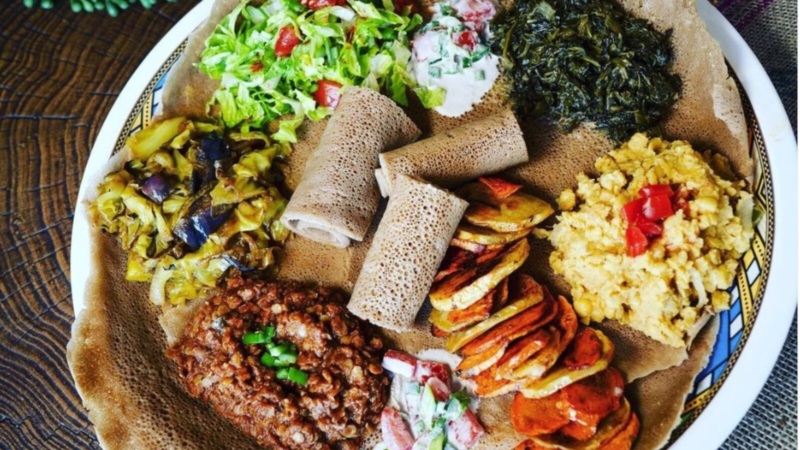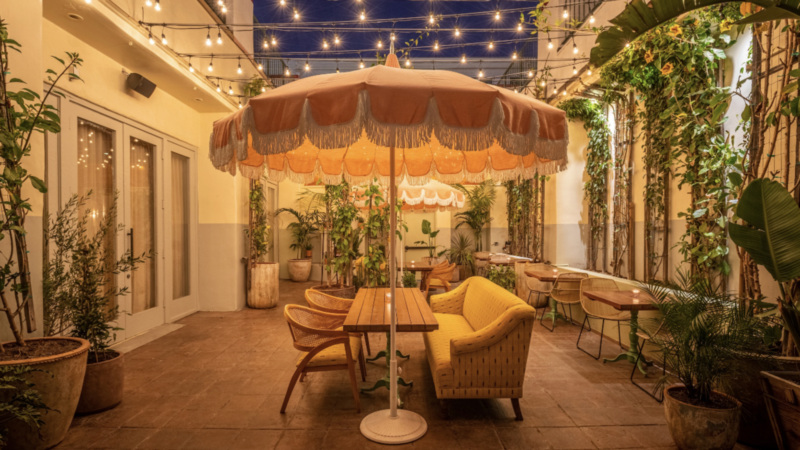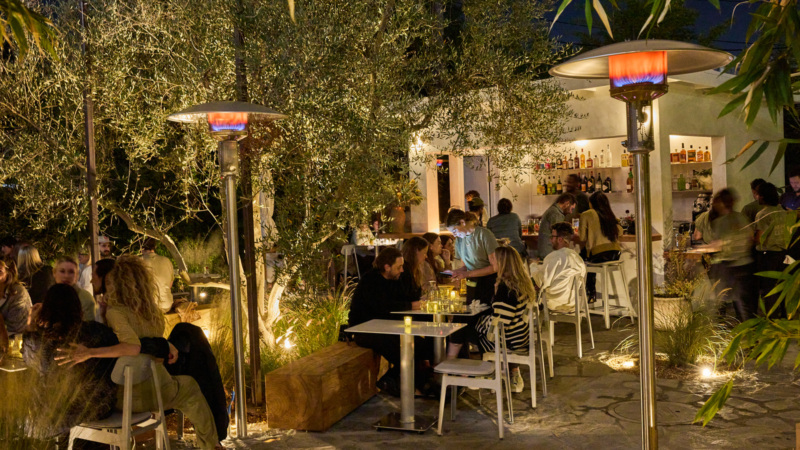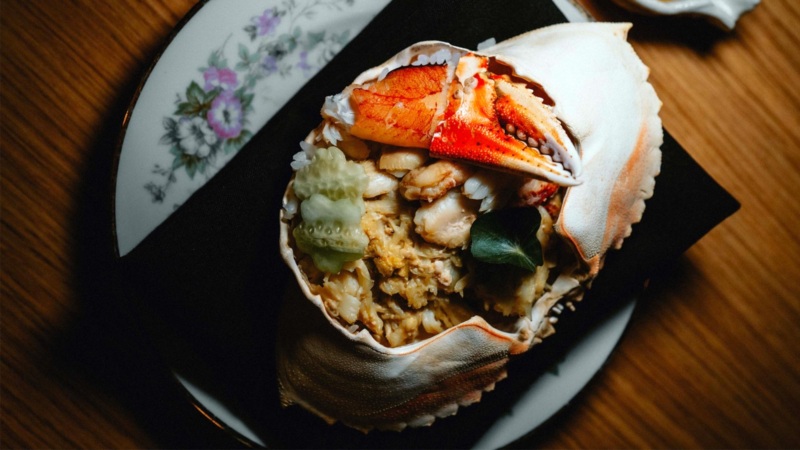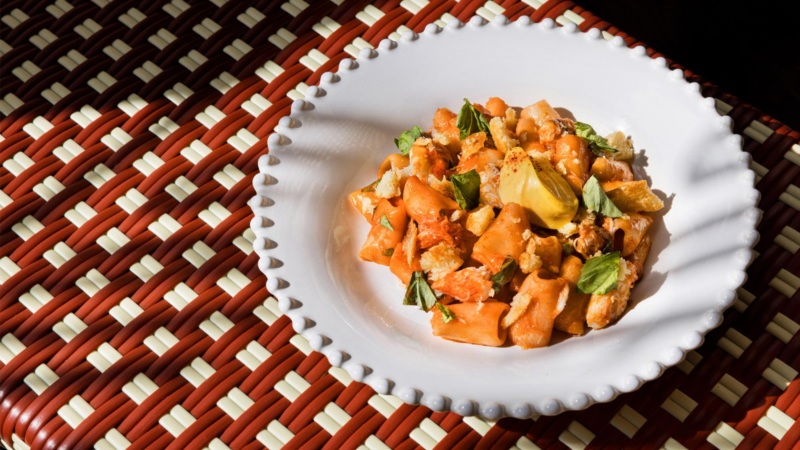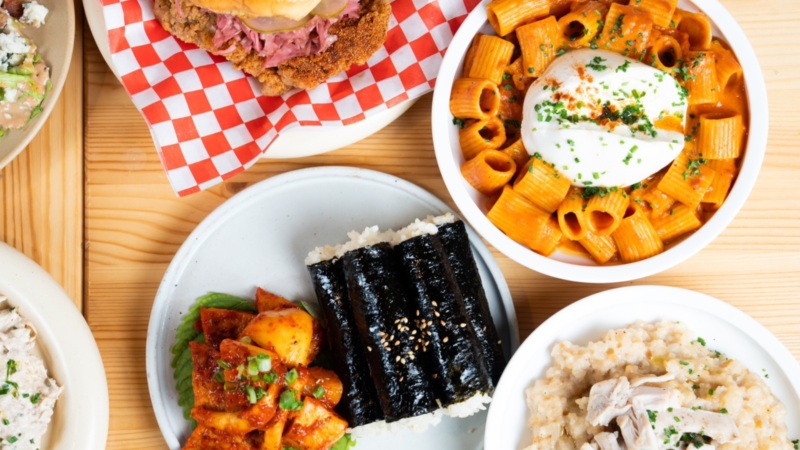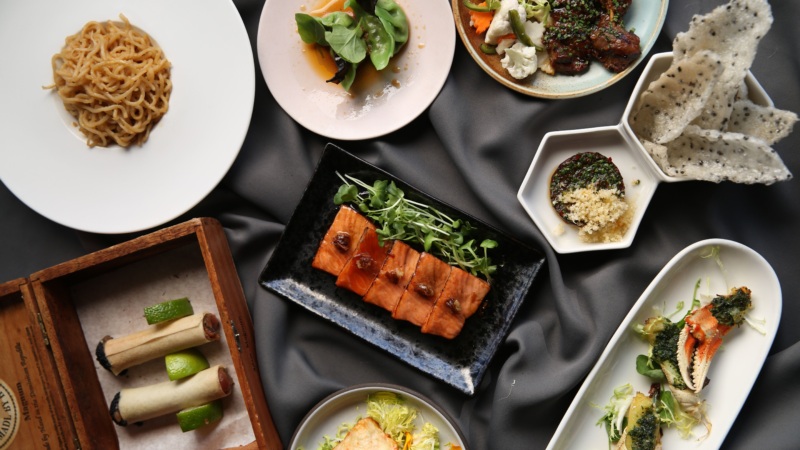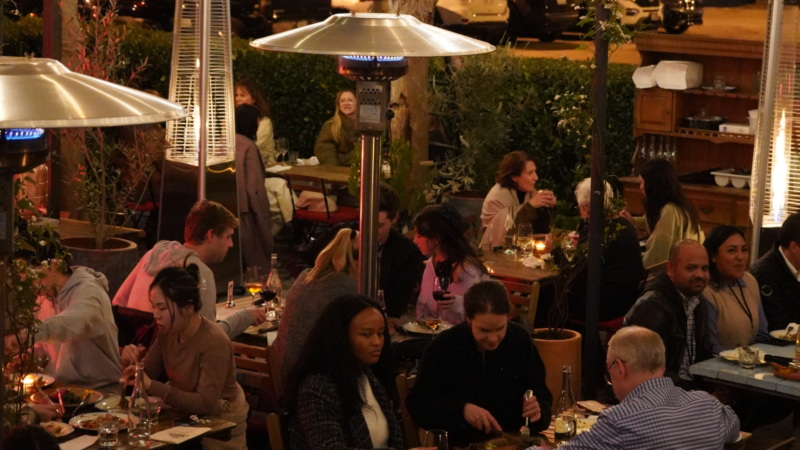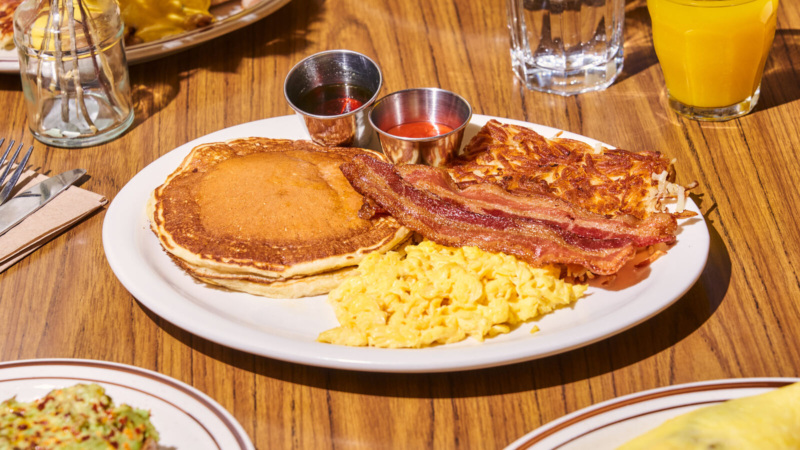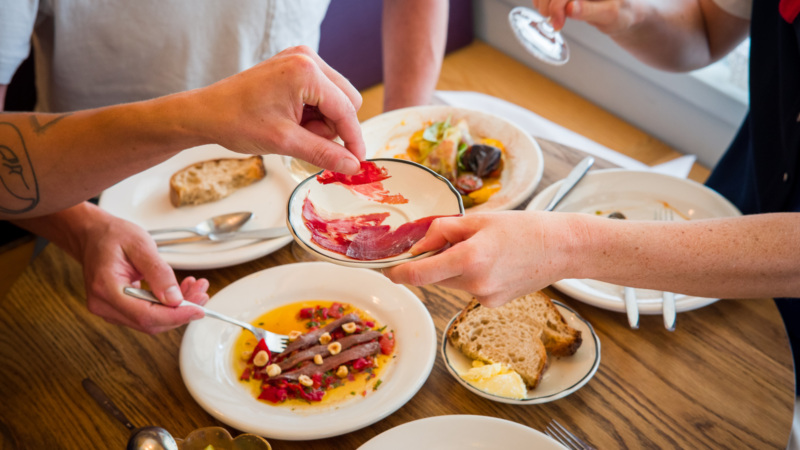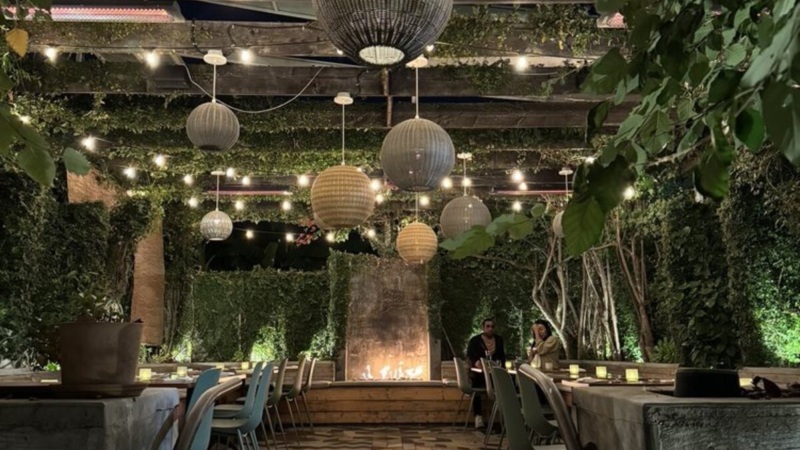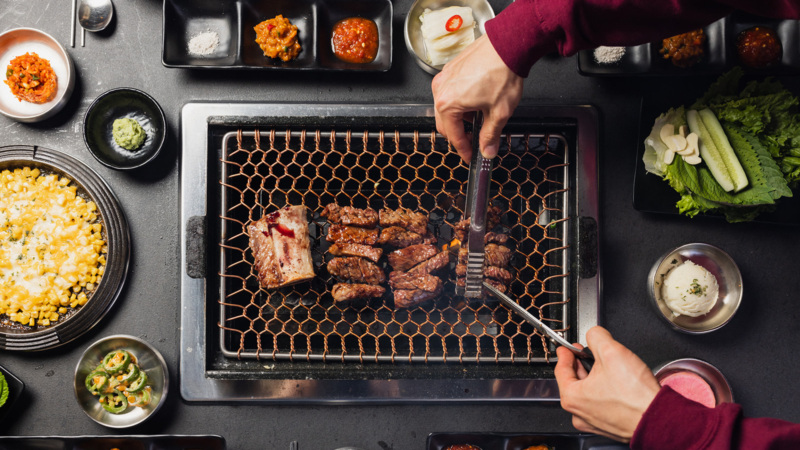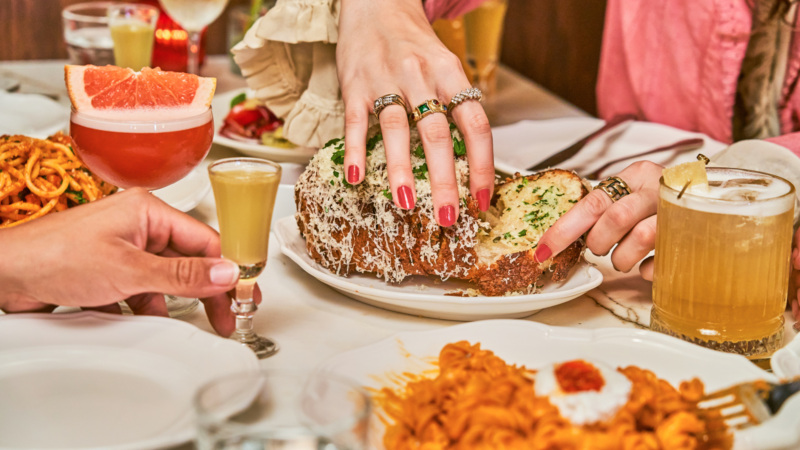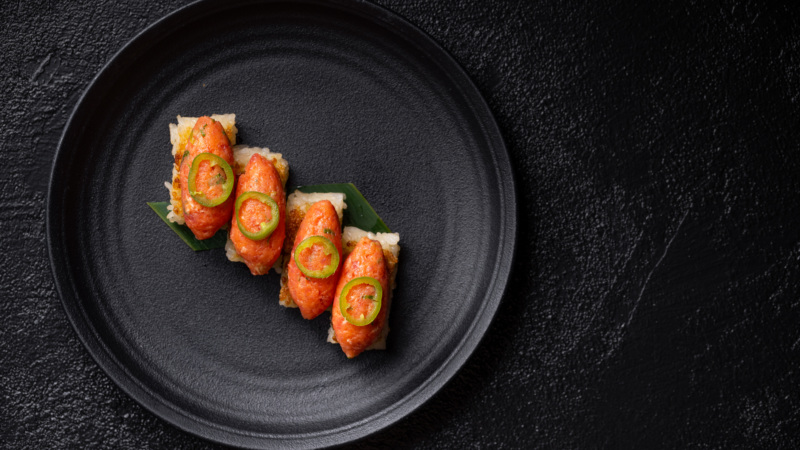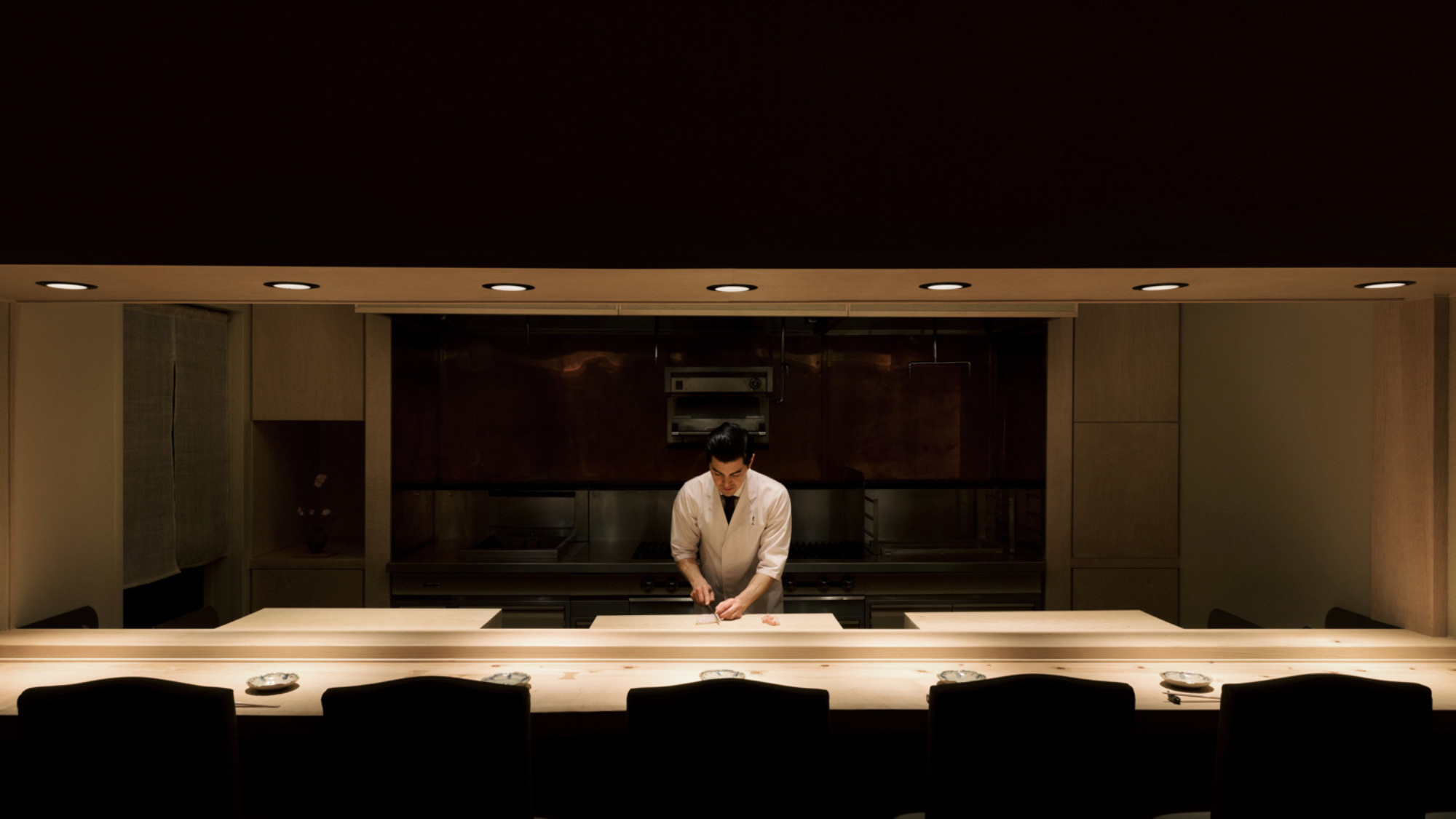
Reimagining Kaiseki Through the Lens of Three Award-Winning LA Chefs
L.A. is buzzing with kaiseki right now—the tradition of serving multi-course meals to celebrate the seasons with exacting technique and local ingredients. By definition, this could describe about half the menus around town, characterized as Italian, French, or “Los Angeles” cuisine. But in Japan, kaiseki is a true art form: everything from how a chef prepares a piece of fish to when it’s served and even how it’s served, is a precise decision. In fact, in its truest form, kaiseki might be too stuffy for our free-wheeling, relaxed way of dining out. That’s not stopping some of the city’s best chefs, like Brandon Go, Niki Nakayama, and David Schlosser, from borrowing the tenets of kaiseki to create a winning formula at their restaurants.
At Hayato, a diminutive seven-seat restaurant hidden in the concrete maze of ROW DTLA, Go utilizes five basic techniques of Japanese cooking—sashimi, grilling, steaming, frying, and simmering—for his 10-course menus. Featuring mostly Japanese seafood and locally grown vegetables, each dish is a study in minimalism. But dishes like tender abalone with a dollop of liver sauce, and seared spot prawn served cold with vinegar jelly, show the depth and complexity behind each preparation; It takes a lot of effort to get something quite complicated to taste that simple.
“So much work goes into each dish,” says the chef. “It’s like learning about really special wines. You know it’s not just about the flavor—you have to know why Chablis is the way it is. You have to know terroir and technique.”

Growing up working in his father’s sushi restaurant and training under some of Japan’s best kaiseki chefs in Tokyo, Go knew he wanted Hayato to be a meaningful dining experience. The chef began by offering lunchtime-only bento boxes; now, with a full-service restaurant, the elaborate bentos are only available on Fridays and Saturdays. For his dinner menus, Go searches for unique ingredients— things he fell in love with in Japan, like blackthroat seaperch, or produce local farmers grow in small quantities.
“As much as I’d like to use local seafood, we import almost all of the fish. I’ll use local crab, abalone, and spot prawns, but blackthroat sea perch, or nodoguro, is considered by many to be the best fish for grilling in Japan.” Go adds: “It’s always on my menu—my favorite fish to use. We get most of our produce from a farm in Oxnard.”

With some omakase menus, a server or chef might simply deliver a dish and quietly recite a few ingredients. At Hayato, Go presents that night’s offerings with as much detail as you and the other diners in the room desire—from where the ingredients were sourced, to the techniques used to prepare them. It must be working: Hayato was awarded one star by Michelin, a feat for a restaurant that’s only one year old.
“The first year at Hayato has been an incredible ride,” he says of the designation. “More than anything, we’re just happy to be able to make our living making food that we are proud of.”
Across the city, in Palms, Niki Nakayama’s 26-seat n/naka is probably the restaurant most associated with kaiseki cuisine in L.A. Featured widely in the press, including her own episode of Chef’s Table, chef Nakayama’s crown jewel has received countless awards—like two stars for n/naka from Michelin, the first female chef to get the designation in L.A.—and gobs of praise for her exquisite tasting menus at the zen-like restaurant.
“People understand kaiseki a lot more now,” adds Nakayama. “My first experience with it was so profound in Japan; the unveiling of little gifts in every dish, is what I hoped to capture when we opened in 2011. To have gratitude toward these wonderful ingredients that nature provides, that’s a wonderful platform to grow from.” But even Nakayama admits that her style is not traditional kaiseki.

“Kaiseki to me means using the best ingredients found closest to you—very seasonal—and present[ing] them in ways so that too many things don’t overshadow [them],” says the James Beard award-winning chef. “Local ingredients alone don’t make it kaiseki—you have to plate a certain way, place in a certain direction, [use] certain colors [as] part of the meal. We try to adhere to that philosophy and tradition but be mindful that we’re not in Japan—we want to represent California as well.”
Nakayama and chef de cuisine Carole Iida-Nakayama (also Nakayama’s wife) grow a lot of their own ingredients at their Culver City home—things like cucumber, squashes, shishito peppers, Japanese eggplant, tomatoes, Szechuan buttons, passionfruit, citrus, and herbs. They work closely with local farmers for a lot of produce as well, and while they use much locally caught wild seafood and shellfish, they also import different varieties from Japan.
Dishes on the 13-course menu change per availability, but the cooking techniques and order of what’s served remains the same. For instance, the saki zuke course, “a pairing of something common and something unique,” might be sazae conch with sweet potato or roasted konbu soup, dashi foam, and caviar. Another, the zukuri, “a modern interpretation of sashimi,” will feature kanpachi with bell pepper and jalapeno gelees, and an avocado sauce. With cherries in season, Nakayama pickles them and serves with wild vermillion rockfish grilled over binchotan.
Like Nakayama, Shibumi chef David Schlosser relies on California produce to serve dishes rooted in kaiseki principles, but without the rigidity. As a California native, Schlosser doesn’t think locals will support a true kaiseki experience—one that strictly follows the seasons, presents plates and dishes in a certain and precise order, and serves them in a private room; it’s too formal. So, while the vision and execution behind each of Schlosser’s dishes is rooted in kaiseki, the service and style of dining is not.
His 42-seat kappo-style restaurant offers a more relaxed experience: “A kappo in its purest form is like pared-down kaiseki,” the chef adds. “The menu is based on kaiseki rules, but with a little less formality. It’s much more approachable.” The ingredients are pristine, plateware is selected to showcase them, and specific cooking techniques are implemented; but unless it’s an omakase menu, there isn’t much order to how things are served. In short: All of those “stuffy” traditions go out the window.
After working with Michelin-starred restaurants in Japan, Schlosser—who himself was awarded one star for his Downtown L.A. spot—created his gem of a restaurant to blend sensibilities from both east and west. Even the decor splits the difference: The requisite kappo counter, a gorgeous piece of natural cypress, is a stark contrast to the urban industrial ducts and high ceilings overhead.
The menu goes through seasonal changes, subtly adjusting the offerings. As we move from spring to summer, Schlosser serves wakatake, or simmered bamboo with wakame. Bamboo is the ultimate spring vegetable, but the seaweed gives it a briny hint of summer; in this way, the dish expresses being on the cusp between the two seasons—in an utterly gorgeous and delicious way.
Schlosser also serves mochi flavored with mugwort, a mystical and aromatic plant used for thousands of years. With a slightly bitter flavor and sage and basil notes, it’s a nice herbal end to the meal. But mugwort isn’t something you see on many L.A. menus; Schlosser serves it because it’s something you’ll see at many traditional kaiseki restaurants in Japan in May or June. “In some Japanese restaurants, you would be shunned if you didn’t serve certain ingredients at certain times of year,” explains the chef.
“Eventually we’ll see kaiseki-style of restaurants in every major city,” Schlosser he says. “It’s a natural progression of things, just like we have Italian and French chefs serving tasting menus. People will just gradually get used to eating that way.”

